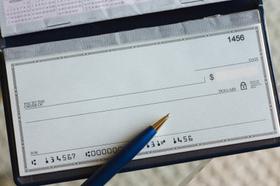Parents turn to private K-12 education for all kinds of reasons, from overall quality of curricula and individualized teaching strategies to location and religious affiliation. Now they may be adding another motivation to the list: overcrowded classrooms and public school bus rides just seem more dangerous in the age of coronavirus.
If you’re home-schooling your kids right now, the day they return to classes may seem like a distant dream. (How’s your blood pressure?) But September will come—with or without online classes. Chances are you’re making decisions right now that will affect at least a year of your child’s future. Chief among them may be how you will continue to finance your child’s private school education.
In 2020, the average cost of K-12 private school tuition reached $11,012. Depending on where you live and whether you have elementary-, middle-, or high school-age kids, your mileage may vary. But across the country, student loan debt has been increasing steadily along with the rising cost of education. K-12 loans aren’t subsidized by the federal government like higher-education loans. Still, many parents clearly believe that private school education is worth the investment. The question moms and dads should be asking themselves is, “How can I be sure I’m investing wisely?”
School Stability
The global coronavirus pandemic has injected uncertainty into every sector of the economy. That’s true at the micro-level, as many parents join the fast-expanding ranks of unemployed workers. It’s also true for private schools, whose economic well-being is based on parents’ ability to pay for tuition. Older, more established schools may be better positioned because they have assets such as endowments to see them through the crisis, although, this isn’t a given. Sometimes there are restrictions on how endowments can be spent. Newer schools may be on shakier ground right now, particularly if they do not own their school buildings and grounds. So if you’re selecting a school for your child for the first time, financial stability is an even more important consideration than before. Changing schools is hard for kids. You don’t want to have to put them through it because your school isn’t living up to its original high standards, or worse, because it has been forced to shut its doors.
Smart Savings Strategies
Paying for private K-12 school requires some planning. Opening a tax-deferred 529 savings account can help you offset the cost of tuition through tax savings. While 529 plans used to be restricted to saving for college, in 2017, regulations were changed to allow parents to use them to save for K-12 education. You can contribute as much as you want to a 529 plan and you can withdraw up to $10,000 annually, tax-free, for eligible expenses.
Reducing Tuition Costs Directly
Many private schools extend financial aid for middle- and low-income families. This tuition assistance makes private schools more accessible and contributes to a more diverse student population. That’s something progressive schools strive for and kids benefit from. Even if you don’t qualify for financial aid, be glad that schools offer it.
Many schools, communities, labor unions, and even corporate sponsors provide scholarships and you’d be surprised by some of the ways kids can qualify for them. Your kid needn’t be a young Einstein or starting quarterback to be scholarship-eligible, though academic merit and sports are among the more common reasons kids get grants. Do you have a proto-Picasso on your hands? In 2020, the Doodle for Google program offered scholarships of up to $30,000 for young artists’ best original interpretations of the Google logo. Kids can earn scholarships for duck-hunting and caddying, too.
Financing and Refinancing Options
Many parents finance their children’s K-12 private school education. We want the best for our kids and are willing to go out on a financial limb to see that they get it—even in troubled times. Everyone is making adjustments in response to the pandemic. Right now, student loan companies are responding to the coronavirus by changing their rates on a more-frequent-than-average basis.
If you are just looking into financing your kids’ education, be sure to shop around carefully for the lowest rate you can find. Right now, rates may be very favorable if you have a strong financial profile, including a high credit score, and if you apply for a variable-rate loan. That’s because the Federal funds rate is near zero right now and lenders are able to borrow money from the Fed in the short term at a particularly low rate. They’re able to pass that savings along to parents. But the low rates lenders advertise are reserved for the most qualified borrowers.
As you’re comparing loans, you may notice that rates can change very quickly. The rate quoted by a lender may not be ready when you are if you postpone applying. That can be frustrating and put pressure on parents to make decisions more quickly than they might find comfortable. Caution is always advisable when borrowing large sums of money, though, so go as slowly as you need to make a prudent loan choice.
If you’ve already taken out student loans for your kids, you might want to consider refinancing. The best student refinancing programs feature not only low rates, but also low fees. As you investigate refinancing, be sure you ask questions. That way, you’ll ferret out such fees as loan origination fees, late payment charges, and more. When it comes to borrowing money, surprises aren’t usually the happy kind.
On the other hand, some refinancing companies actually offer bonuses for giving them your loan business. There is a catch, though. Refinancers are looking for the lowest-risk borrowers they can find. Parents with high credit scores will fare better in the refinancing market because refinancing companies often have more stringent requirements than lenders who offer original loans.
Consider the Value Along with the Cost
Prioritizing expenses can be challenging in the best of economic times. Today, when many families are having to make do with less, paying bills can be legitimately compared to a juggling act. Or perhaps even a magic trick. Yes, financing your kids’ education can be painful. But unlike many other investments, education retains its value. Long after graduation, it will continue to pay off in the currency your kids need to succeed—perseverance, curiosity, and a greater capacity for learning.
Questions? Contact us on Facebook. @privateschoolreview














